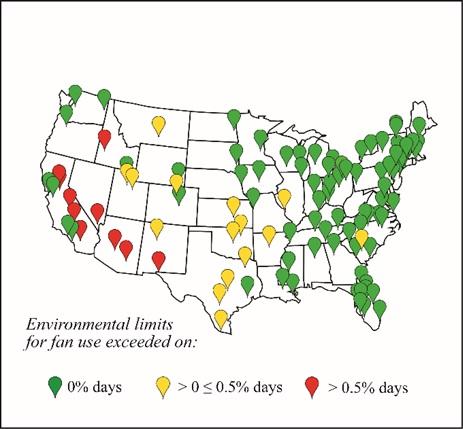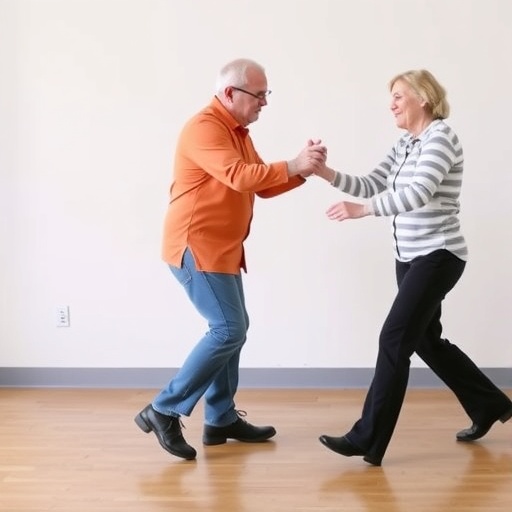
Credit: Thermal Ergonomics Laboratory, University of Sydney published in Science of the Total Environment
A new study from Australian scientists at the forefront of climate and health modelling suggests electric fans and water dousing could be a viable stay-at-home cooling strategy as the United States (US) anticipates extreme heat.
The risk of two major public health threats converging– a heatwave and the COVID-19 pandemic–is quickly becoming a reality as the US approaches its hottest month of the year with COVID-19 cases continuing to rise.
“Authorities have acknowledged that the usual strategies recommended to protect individuals from heat-related illness such as seeking refuge in air-conditioned places including dedicated cooling centers or shopping malls risks further transmission of the virus,” said senior author Associate Professor Ollie Jay from the University of Sydney (Australia).
“We also know that many of those who are most at-risk of COVID-19 are those also at-risk of heat-related illness, such as the elderly and those with cardiovascular or respiratory conditions.”
“There is an urgent need for low-cost, accessible cooling strategies to protect the most vulnerable from heat-related illness and the spread of SARS-COV-2. Our study challenges outdated public health advice suggesting that fans are not beneficial in extreme heat.”
In the new study, published in Science of the Total Environment, researchers from the University of Sydney’s Faculty of Medicine and Health and Charles Perkins Centre examine if electric fans combined with spraying water directly onto the skin (self-dousing) is an effective stay-at-home cooling solution during summer conditions in the US
Key findings:
With modelling based on clinical trials and historic weather data the researchers found;
- In 80 of the 105 metropolises examined electric fan-use would have resulted in effective cooling on every summer day over the last 20 years.
- In only 3 of the 105 metropolises assessed (Phoenix and Tucson, Arizona and Las Vegas, Nevada), this method would not have been effective more than five percent of the time.
- This means 65 percent of the US population (200 million of the 222 million residents living in these most populous metropolises) could have effectively used this strategy to keep cool on 100 percent of summer days.
They conclude that this solution could be potentially recommended by health authorities as a safe and effective stay-at-home cooling strategy across vast swathes of the Northeast, Southeast and Midwest regions of the United States, as well as the West Coast.
The researchers acknowledge that while the modelling is conservative (based on the physiology of an older adult) it can only show when fans would or would not be effective based on climate. As with many public health interventions, an individuals’ response to the cooling strategy may be influenced by their health status.
The modelling explained:
Based on previous work published in JAMA and Annals of Internal Medicine the authors modelled the humidity-dependent threshold temperature under which fans and self-dousing provide a beneficial cooling effect.
The previous trials conducted on participants in a climate-controlled chamber show that that in hot, humid conditions fans lower core body temperature and cardiovascular strain and improve thermal comfort. However, fans can be detrimental in very hot, dry conditions.
These data were analysed alongside historic weather data (temperature and associated relative humidity) recorded at any point over the last 20 years (2000 to 2019 inclusive) for 105 of the most populated metropolis areas in the United States.
First author and PhD student Lily Hospers said: “Importantly, this research proposes a potential cooling strategy that can be used at home during the current pandemic, therefore circumventing the need for potentially risky excursions into public spaces and expensive home-based air-conditioning.”
Declaration: The authors declare no competing interests.
###
Media Contact
Michelle Blowes
[email protected]
Related Journal Article
http://dx.




